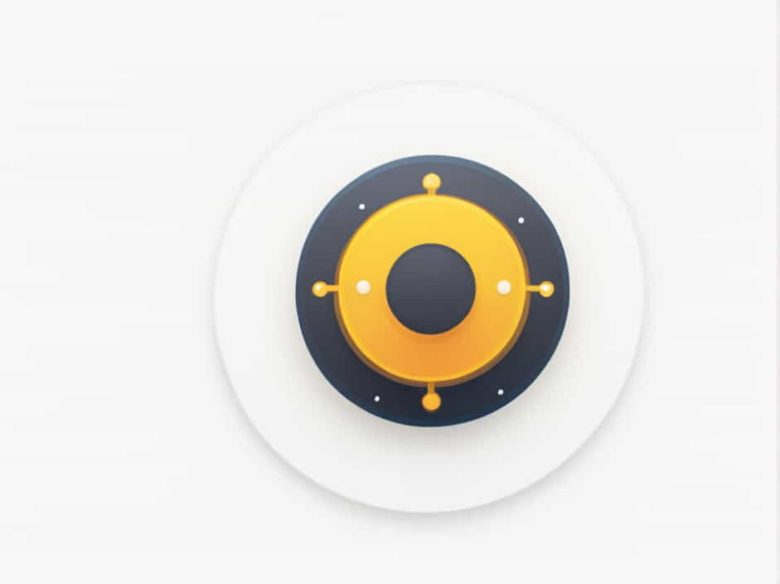For centuries, people believed that Earth was the center of the universe. This idea, known as the geocentric model, was widely accepted in ancient times. However, a revolutionary concept emerged: the heliocentric model, which proposed that the Sun, not Earth, was at the center of the universe. This idea transformed our understanding of astronomy and laid the foundation for modern science.
Who first proposed this radical idea? While Nicolaus Copernicus is often credited with developing the heliocentric model, the concept dates back much earlier. Let’s explore the history and evolution of heliocentrism, from ancient philosophers to the great scientists of the Renaissance.
The Geocentric Model: The Early View of the Universe
1. Ancient Beliefs About the Universe
In ancient times, civilizations like the Babylonians, Egyptians, and Greeks believed that the Earth was the center of the universe. This geocentric model was based on everyday observations:
- The Sun, Moon, and stars appeared to move around Earth.
- The ground felt solid, suggesting Earth was stationary.
- Religious and philosophical beliefs reinforced the idea of Earth’s central importance.
2. Ptolemy’s Geocentric Model
The most influential version of the geocentric model was proposed by Claudius Ptolemy in the 2nd century AD. His system, known as the Ptolemaic model, described the planets moving in complex circular orbits (epicycles) around Earth.
The Ptolemaic model was accepted for over 1,400 years, largely because it aligned with religious doctrines and observational data at the time.
Early Ideas of a Heliocentric Universe
1. Aristarchus of Samos: The First Heliocentric Theory
Long before Copernicus, the Greek astronomer Aristarchus of Samos (310-230 BCE) was the first to propose a heliocentric model. He suggested that:
- The Sun is at the center of the universe.
- Earth and other planets orbit around the Sun.
- The stars are much farther away than previously thought.
2. Why Was Aristarchus Ignored?
Despite its brilliance, Aristarchus’ heliocentric model was rejected because:
- It contradicted Aristotle’s philosophy, which stated that Earth must be the center.
- No observable stellar parallax (apparent shift of stars due to Earth’s motion) was detected.
- The idea lacked strong mathematical evidence at the time.
As a result, the geocentric model remained dominant for over a millennium.
The Renaissance and the Revival of Heliocentrism
1. Nicolaus Copernicus: The Father of Modern Heliocentrism
In the 16th century, Polish astronomer Nicolaus Copernicus (1473-1543) revisited the heliocentric theory. His groundbreaking work, De Revolutionibus Orbium Coelestium (1543), proposed that:
- The Sun is the true center of the universe.
- Earth rotates on its axis and orbits the Sun.
- Planets follow circular orbits around the Sun.
Though Copernicus’ model still contained errors (such as circular instead of elliptical orbits), it challenged the long-standing Ptolemaic system.
2. Galileo Galilei and His Observations
Italian scientist Galileo Galilei (1564-1642) provided strong evidence for the heliocentric model using a telescope. His discoveries included:
- Moons orbiting Jupiter, proving not everything revolves around Earth.
- Phases of Venus, which could only occur if Venus orbited the Sun.
These findings supported Copernicus’ theory but led to conflict with the Catholic Church, which banned heliocentric teachings for many years.
3. Johannes Kepler and Elliptical Orbits
German astronomer Johannes Kepler (1571-1630) improved the heliocentric model by discovering that planets move in elliptical orbits, not circles. His three laws of planetary motion accurately described how planets orbit the Sun, making the model more precise.
4. Isaac Newton and the Law of Gravitation
English physicist Isaac Newton (1643-1727) explained why planets orbit the Sun. His law of universal gravitation showed that:
- The Sun’s gravity pulls planets into their orbits.
- The motion of celestial bodies follows predictable mathematical laws.
Newton’s work confirmed that the heliocentric model was correct, leading to its widespread acceptance.
The Impact of Heliocentrism on Science
1. The Scientific Revolution
The acceptance of the heliocentric model marked the beginning of the Scientific Revolution, leading to:
- The rejection of ancient beliefs that were based on tradition rather than evidence.
- The rise of scientific inquiry based on observation and mathematics.
- Advancements in astronomy, physics, and space exploration.
2. Modern Astronomy and the Expanding Universe
Today, we know that the Sun is not the center of the universe, but just one of billions of stars in the Milky Way galaxy. Modern astronomy, based on heliocentric principles, has revealed that:
- Our galaxy is just one among trillions in the observable universe.
- The universe is expanding, as discovered by Edwin Hubble in the 20th century.
The idea of a heliocentric universe was first proposed by Aristarchus of Samos, but it was not widely accepted until Nicolaus Copernicus revived the theory in the 16th century. The work of Galileo, Kepler, and Newton provided the evidence needed to confirm that the Sun is the center of the solar system.
The shift from geocentrism to heliocentrism revolutionized science and paved the way for modern astronomy. Today, our understanding of the universe continues to evolve, but the contributions of early heliocentric thinkers remain one of the most important breakthroughs in human history.



